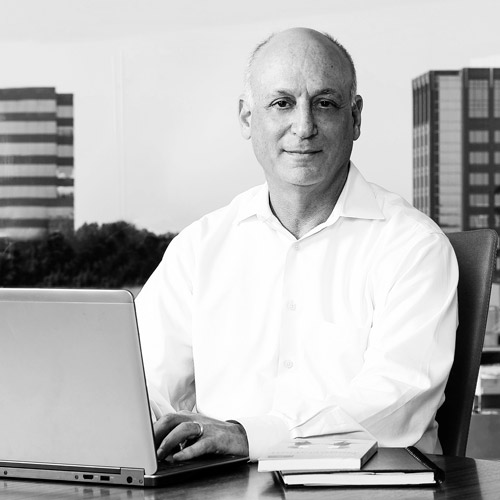AARP is not slowing down. The half-century-young company is using the technology sphere to thwart stereotypes of aging, promote social altruism, and bring its members up to light-speed in preparation for the digital future. “Most people that come through our doors may have a preconceived impression of who we are and what we do,” says Terry Bradwell, executive vice president and chief enterprise strategy and innovation officer at AARP. “But by the time they leave they say, ‘Oh my god, we didn’t realize you guys were doing so much.’”
The no-rest record
From humble beginnings to a C-suite office, Terry Bradwell can be considered a true journeyman on his ascent up the corporate ladder. But that success has only come with hard work, starting at an early age with his first job as a paperboy.
• From 1975-1978, Bradwell worked his first job delivering newspapers in Florida for the Tallahassee Democrat.
• Then until 1980, he worked at Sonny’s BBQ in Tallahassee as a line cook.
• From there, Bradwell went to work at WANM as a disc jockey until 1982.
• His first job in technology would follow as he worked as a computer operator until 1984 for the Florida Department of Transportation.
• Bradwell then moved overseas to the Netherlands to work for Intergraph PP&M as a software engineer until the early 1990s.
• In 1990, Bradwell returned to the United States to work at Georgia-Pacific LLC as a senior software engineer.
• Then in 1992, Bradwell returned to the Netherlands to work as a manager of logistics systems at P&O Nedlloyd.
• In 1993, Bradwell went to work for GTECH as a solution delivery executive—online lottery technology for GTECH in Providence, Rhode Island.
• After his tenure with GTECH, he joined IBM in 1996 as a principal consultant in the media and entertainment sector until 2002.
• Bradwell started working for AARP in November 2002 as the vice president of membership management technology.
• In 2011, his role became vice president of application services, and in 2012, he was named executive vice president and chief information officer for AARP.
• Today, Bradwell is the executive vice president and chief enterprise strategy and innovation officer.

Under the leadership of its executive team, the fifty-plus-year-old advocacy organization is staying true to its roots while paving the way for forward-thinking initiatives. Part of that new initiative came in 2014 when AARP unveiled the RealPad, a tablet designed in collaboration with Intel aimed at making technology accessible for people age fifty and older who aren’t digitally savvy. It’s a far cry from clipped magazine coupons and insurance discounts that are sometimes associated with the thirty-eight million member organization.
Until that time, according to Bradwell, the nonprofit had never designed a physical retail product and sent it out into the marketplace branded with the AARP name. “One of the issue areas that we’re heavily focused on is the technology space—specifically technology for older adults—which historically has been laggard when compared with the general population,” he says. “So we saw the opportunity and took a risk.”
Yet Bradwell is quick to indicate that AARP isn’t driven to innovate just for the sake of innovation or out of industry competition. Rather, the nonprofit is seeking to do what it does best: promote meaningful advancements for those age fifty and older. “Our goal wasn’t to sell a tablet and make money from it,” Bradwell explains. “It was more about demonstrating to the marketplace what the consumer—especially in our demographic—actually wants and needs in a product.”
Bradwell’s team also wanted to lessen the learning curve for the device to create an effective model of technical support for older users, which Bradwell says is a common area of complaint. As a result, the tablet includes embedded, easily accessible instructional videos and a complementary 24-7 phone service. “For our membership, it’s not about the bells and whistles,” Bradwell says. “It’s about having the confidence in knowing that the next time you power-up your device, everything works like it did the last time.”
After working for nearly a quarter century in various technology roles, from disc jockey to senior software engineer at Georgia-Pacific to principal consultant at IBM, Bradwell found himself drawn to AARP’s humanitarian mission in the wake of a family health crisis. “They were one of my clients when I was with IBM. And at the same time, my mother was going through a debilitating illness. So my sister and I found ourselves in a caregiving situation we did not plan for,” he recalls.
Bradwell says AARP stood out in his mind from the beginning. “With all of the other clients that I had at the time—Warner Bros., Sony, Fox, so many other clients in the media and entertainment space—I felt something special every time I would meet with AARP,” Bradwell says. “I realized people need places like AARP to come to. They need organizations who are going to advocate on their behalf. That sparked something in me, and it changed me forever.”
Now as the head of enterprise strategy and innovation, or an “inspirational change agent” as he refers to it, Bradwell realizes he and his team have to place strategic emphasis on fostering a culture that is aware of the strengths of the nonprofit’s past while embracing the future. They aim to keep the mission-driven organization relevant and on a successful path toward its goals. “Like most organizations, when you start doing things the same way over and over again, you develop a ‘muscle memory,’ and that ‘muscle memory’ becomes an intrinsic part of the organization’s developed culture,” he explains.
Over the past fifty years, Bradwell says, AARP’s “muscle memory” has been hyper-focused on developing a passionate and protective culture for the older population. “But we also realize that the world is changing at light-speed around us,” he says. “Today we’re driving cars, but thirty years from now we may just be sitting in them. So what are the policies we need to start thinking about right now? How do we need to advocate around those changes that are going to happen? We want to make sure we are progressing in the direction the world is moving.”
One of the first innovative programs Bradwell and his team implemented was AARP TEK, an intergenerational set of workshops centered around the notion of teaching digital literacy to an older demographic. It has now gone national in twenty major markets with hundreds of workshops occurring across the United States every year.
At this year’s CES—a consumer electronics conference notable for the debut of such paradigm-shifting products like the CD player, DVD, and HDTV—Bradwell and Jody Holtzman, AARP’s senior vice president for enterprise strategy and innovation, took center stage. They revealed new research related to caregiving technology’s 13 percent market increase projected over the next four years.
They also emphasized the role that the fifty-plus age population plays in creating more than $7 trillion of economic activity. “We see caregiving as a huge, huge challenge, yet opportunity for America. We really want to address the very fragmented caregiving system and increase the quality of and access to caregiving for both those being cared for as well as caregivers,” Bradwell says. “This is going to be a societal challenge.”
AARP is also seeking to tackle another social challenge: popular misconceptions regarding the nature of aging. “Too often the word ‘aging’ triggers thoughts of decline and challenges and loss. But you know, the truth is that we’re really always changing,” Bradwell says. “People over fifty are starting new businesses. They’re falling in love, taking classes, traveling, and volunteering. They’re not just sitting there aging.”
With AARP’s #DisruptAging movement, the older and younger generations alike are asked to confront and retire mistaken assumptions about age, and to alter the conventional story about what aging means in society. “No matter where we come from—our race, creed, color, background, or culture—we are all going to get older. And there are implications with getting older,” Bradwell says. “Our job at AARP is not just to help individuals understand those implications, but also to help them understand that getting older is not about getting diminishing returns in life. It’s about having things to look forward to, no matter what your age is.”

